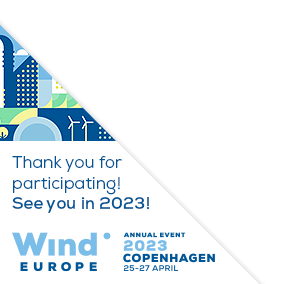Posters
Siblings:
ProceedingsProgrammeSpeakersPostersContent PartnersGlobal Markets TheatreWindTalks for InnovationProgramme Committee & Abstract ReviewersSpeaker's DashboardCome meet the poster presenters to ask them questions and discuss their work
Check the programme for our poster viewing moments. For more details on each poster, click on the poster titles to read the abstract. On Wednesday, 6 April at 15:30-16:15, join us on Level 3 of the Conference area for the Poster Awards!

PO016: Comparison of different dynamic cable configurations for floating offshore wind turbines: static design tools
Francesco Boscolo Papo, Researcher in Offshore Renewable Energy, Tecnalia
Abstract
For floating offshore wind turbines, great importance must be given to the electrical evacuation system, composed mainly by a series of Dynamic Power Cables (DPCs) and their ancillary elements which together have the goal to bring the produced energy to the onshore grid. The DPC requires a high level of flexibility, compliance with a floater motion and fatigue resistance subject to environment conditions, as a combination of waves, current and seabed touchdown interactions. Consequently, it needs to be robust and flexible at the same time. As the offshore wind farms (OWFs) move further offshore and the depth increases, it is expected to have wind turbines with a higher power per unit in order to reduce the number of platforms needed for the same amount of power; consequently, the DPC will have to comply with higher nominal voltage and higher power requirements. The increase in nominal voltage causes a drastic change in the weight / diameter ratio of the cables themselves that makes the cable more subject to environmental forces. This makes even more interesting to analyse and evaluate which kind of cable configuration better fits and, above all, which are the limit values, in terms of depth, distance between platforms and total power, which characterise the different optimum configurations. The potential for increase of compliance level and strength of the DPC, and for the consequent reduction in maintenance cost, is based on the ability of the DPC to respond to the loads and imposed movements during the entire project life










Follow the event on: